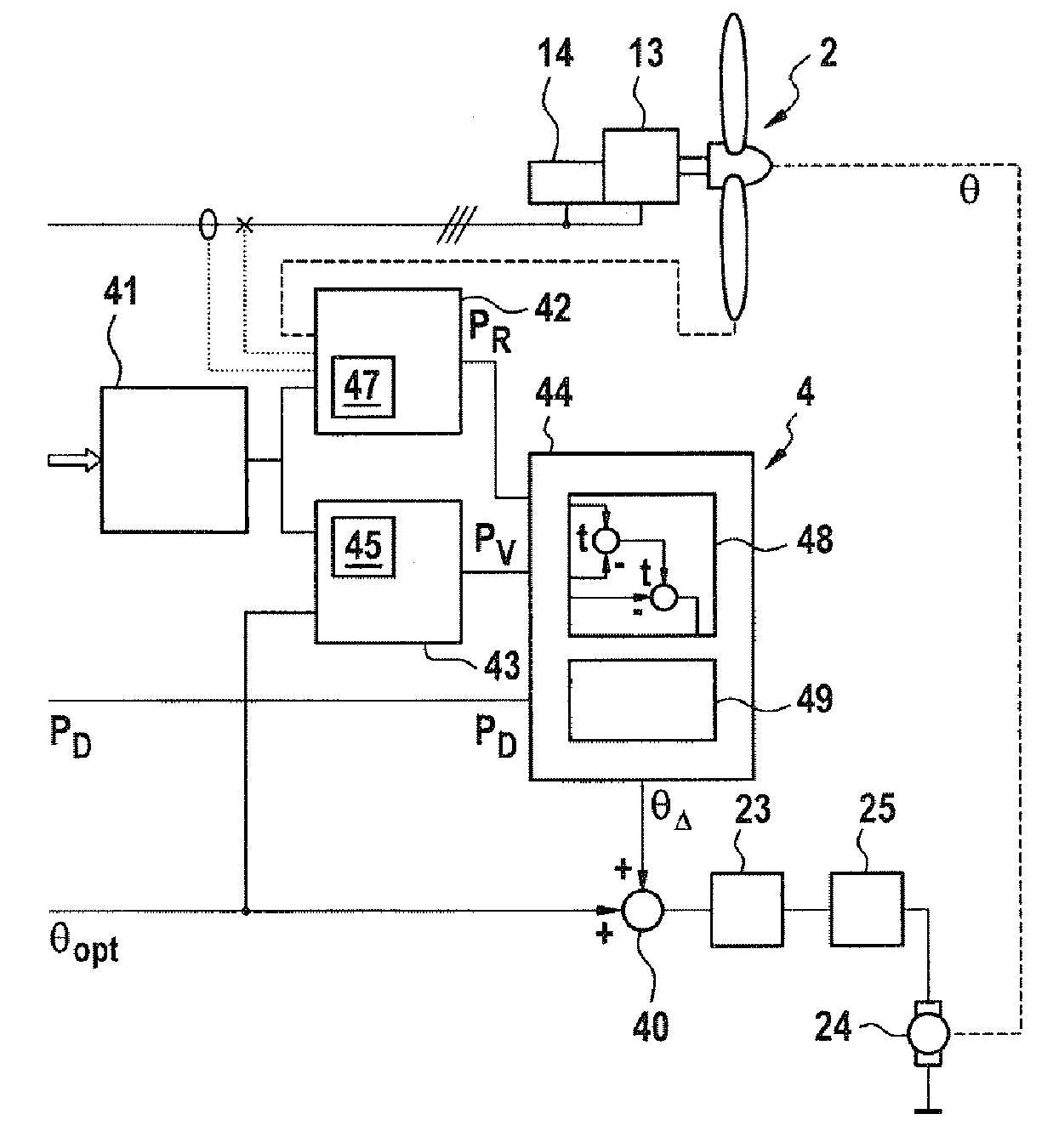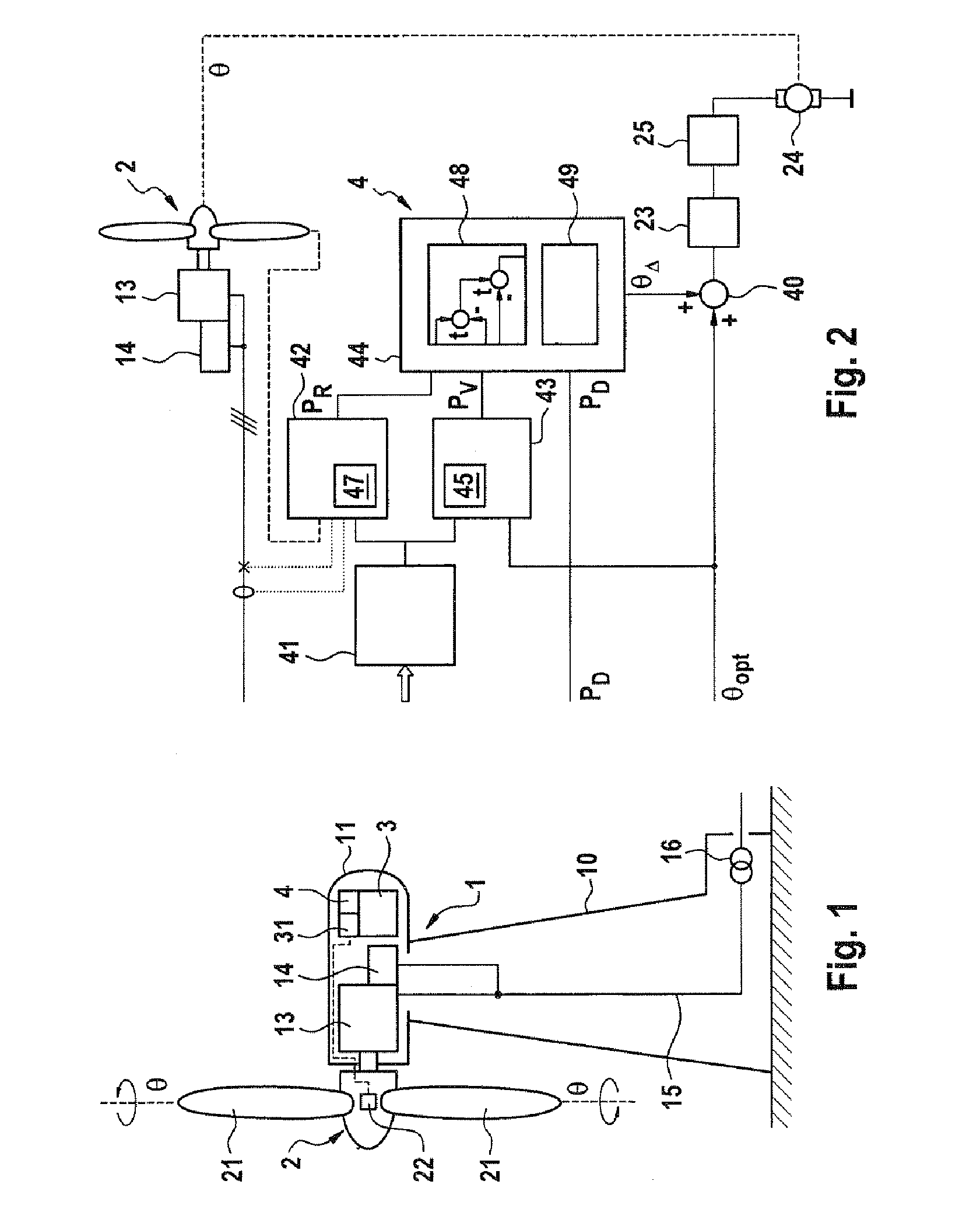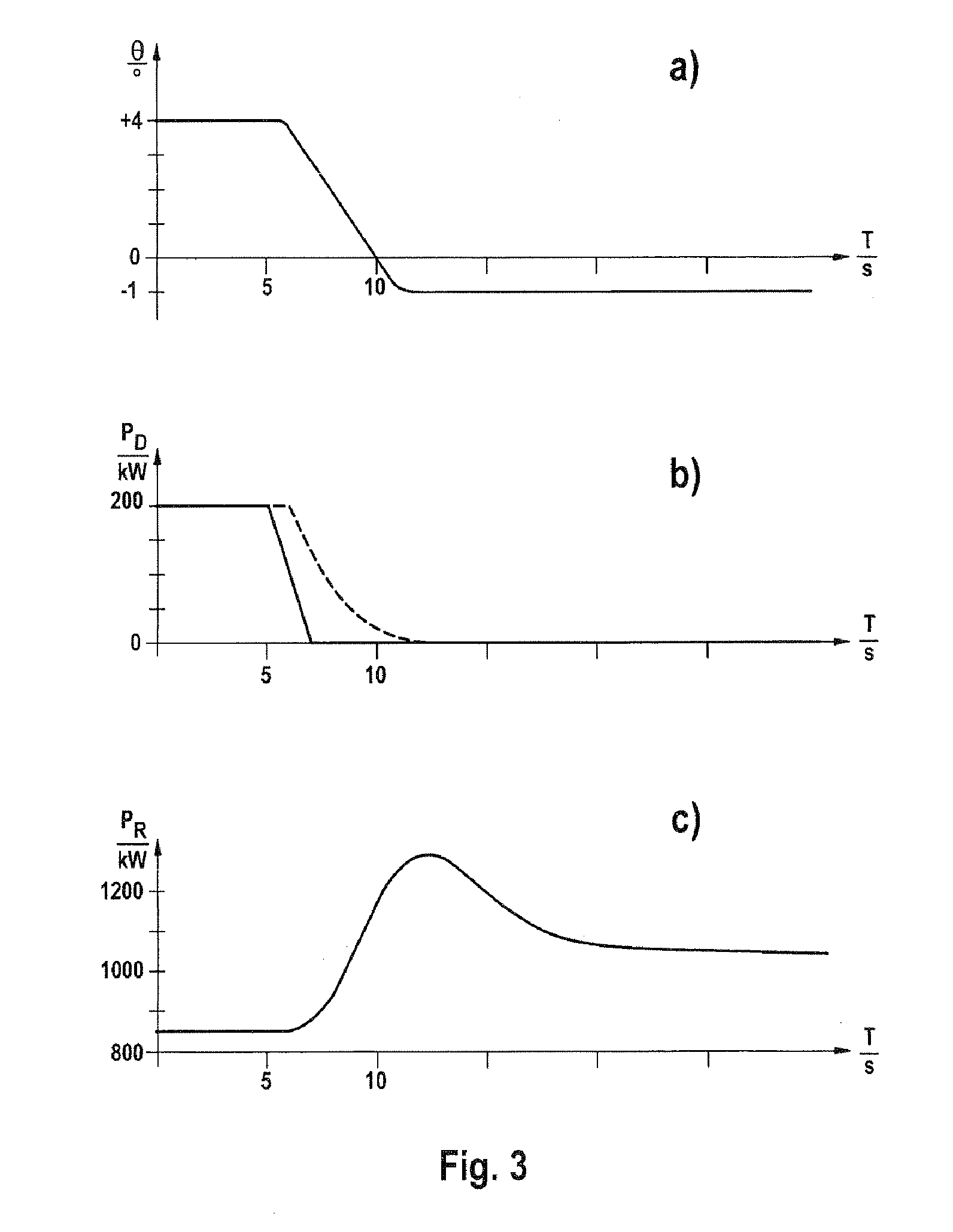Wind power plant having an adjustable power reserve
a technology of wind power plants and power reserves, which is applied in the direction of electric generator control, machine/engine, greenhouse gas reduction, etc., can solve the problems of inability to easily increase the maximum power capability of individual wind energy installations in the wind farm, inability to adjust the maximum power capacity of individual wind energy installations, and high cost of setting up and operating these power stations, so as to reduce the actuation activity of pitch drives, the regulation of power reserves is stable, and the effect of high regulation stability
- Summary
- Abstract
- Description
- Claims
- Application Information
AI Technical Summary
Benefits of technology
Problems solved by technology
Method used
Image
Examples
Embodiment Construction
[0024]A wind energy installation 1 according to one exemplary embodiment of the invention comprises a tower 10 at whose upper end a nacelle 11 is arranged such that it can pivot in the azimuth direction. A wind rotor 2 is arranged such that it can rotate on an end face of the nacelle 11. Via a rotor shaft, this wind rotor 2 drives a generator 13, which converts the mechanical power produced by the rotor 2 to electrical power. In the illustrated exemplary embodiment, the generator 13 is in the form of a doubly-fed asynchronous machine, which is connected via a stator directly to a connecting line 15, and by its rotor via a converter 14 indirectly to the connecting line 15. The connecting line 15 leads to an installation transformer 16, which is preferably arranged in the area of the foot of the tower 10. The installation transformer 16 is connected to a power transmission grid system, with this generally being an internal grid system for a wind farm. An operation controller 3 is furt...
PUM
 Login to View More
Login to View More Abstract
Description
Claims
Application Information
 Login to View More
Login to View More - R&D
- Intellectual Property
- Life Sciences
- Materials
- Tech Scout
- Unparalleled Data Quality
- Higher Quality Content
- 60% Fewer Hallucinations
Browse by: Latest US Patents, China's latest patents, Technical Efficacy Thesaurus, Application Domain, Technology Topic, Popular Technical Reports.
© 2025 PatSnap. All rights reserved.Legal|Privacy policy|Modern Slavery Act Transparency Statement|Sitemap|About US| Contact US: help@patsnap.com



